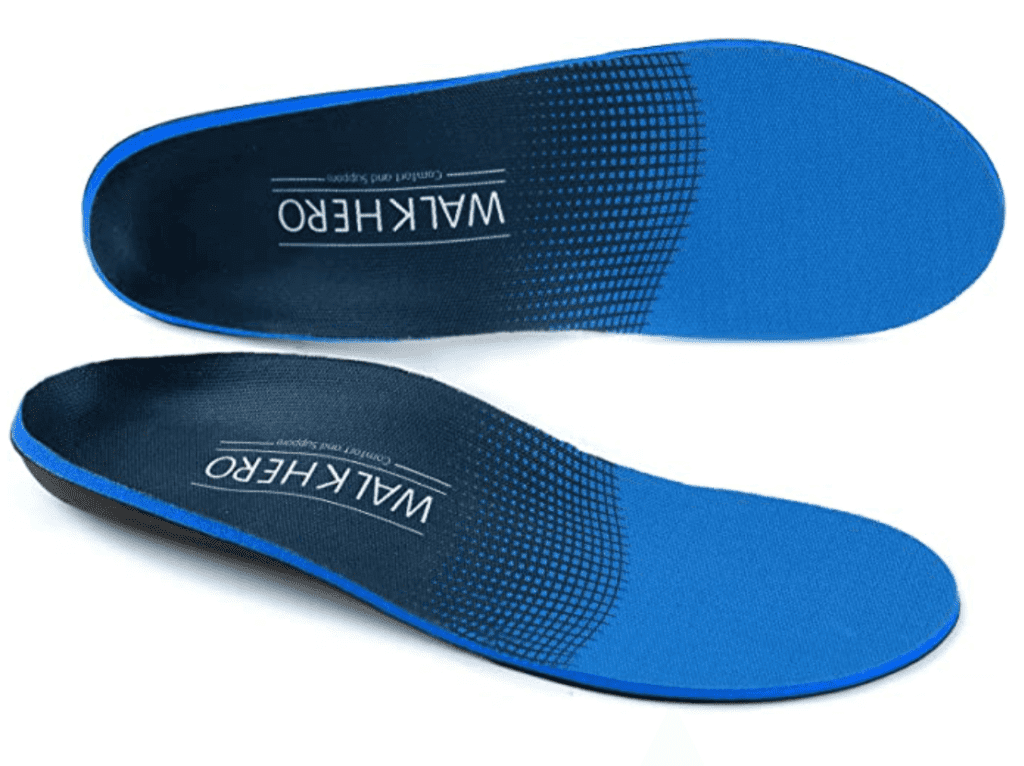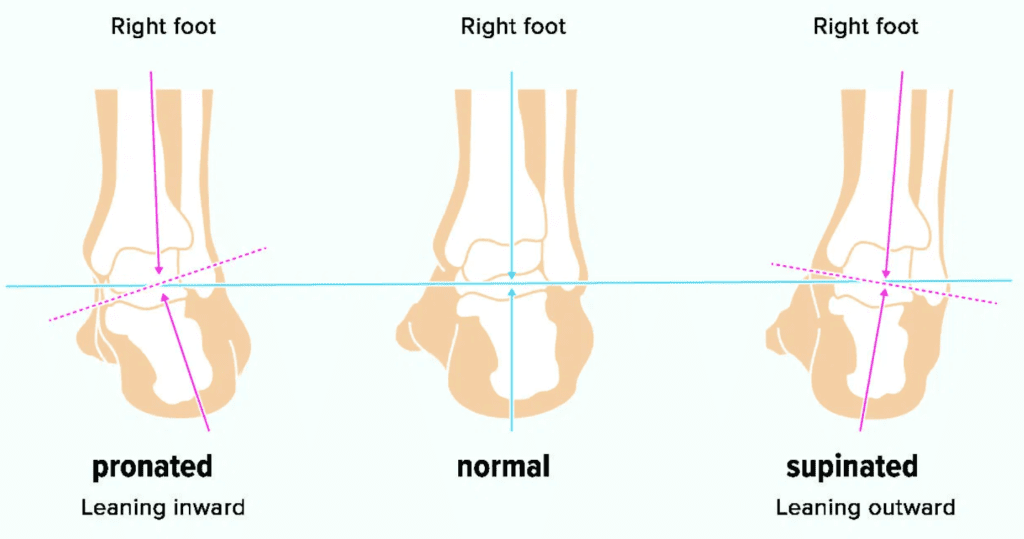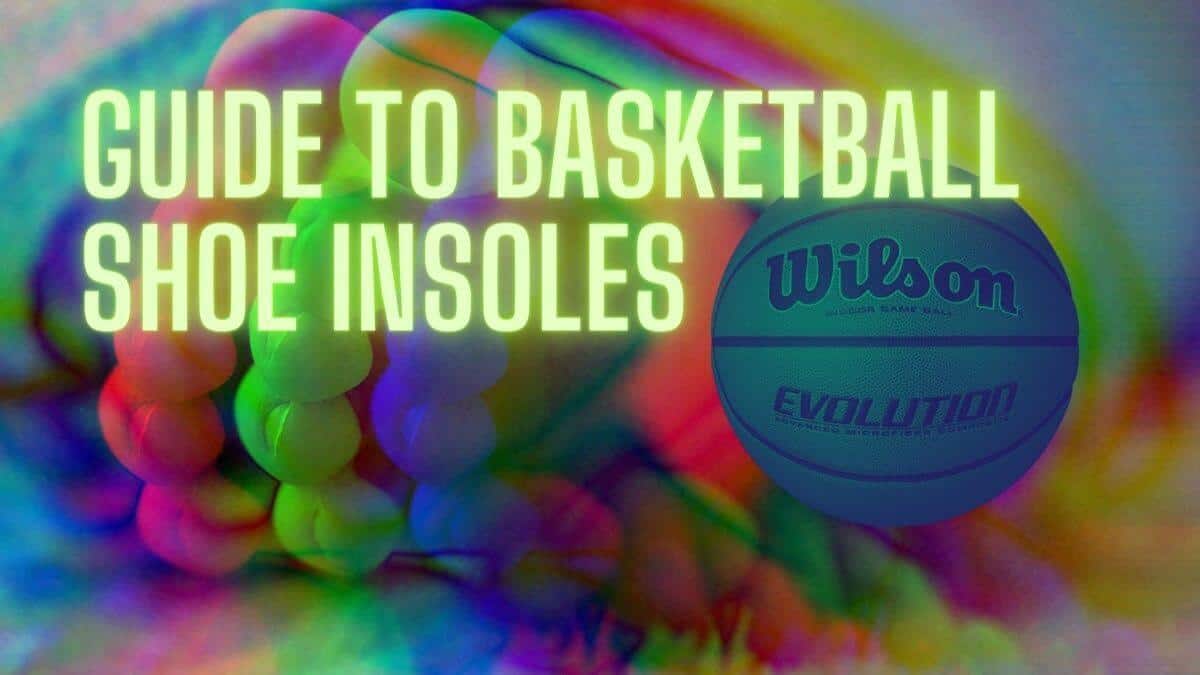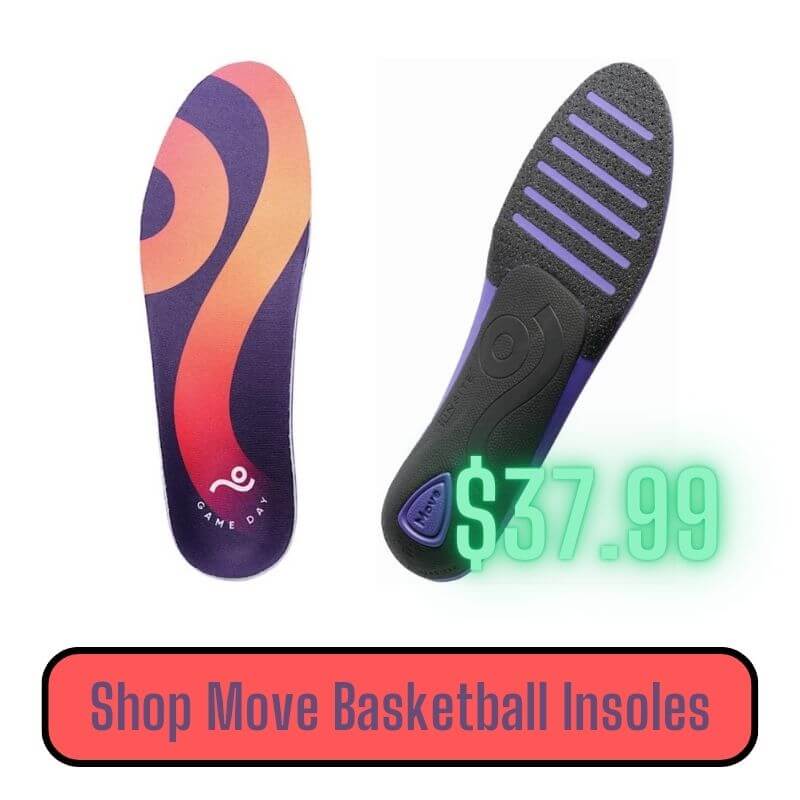When you make a purchase through links on this post, we may earn a commission through Amazon or other retailers. Learn more about our affiliate disclaimer.
When it comes to sports, you need to treat your dogs right. Just ask Michael Vick. 🥁
Seriously though, If you play basketball regularly, insoles are clutch. This sport can be rough on your feet. And the world of foot care is impossibly vast and confusing, so unless you’re prepared to invest yourself fully in a comprehensive understanding of foot anatomy, you’re gonna want some guidance.
The main concern in your quest for the perfect basketball shoe insoles is comfort. Performance comes second. Price fits in there somewhere too, but that goes without saying.
I’ve divided this article along those lines: comfort, performance, then price. If there’s a specific issue that’s bothering you, find it in the Table of Contents and click down.
If you’re just looking for something better than what came stock in your shoes, jump straight to the performance section where you can find several basketball-specific insole options. You’re not going to completely turn your game around with a shoe insert, but they can absolutely provide benefits in comfort, safety and performance.
I’ve gone through quite a few combinations to find my perfect setup, so I understand the struggle here. Finding the right insoles can be a drag. We’ll cover all of the main foot-related issues that come up in basketball and point you towards the right solution.
Now, even if your feet aren’t actively causing you discomfort, there may be an underlying issue that will cause problems down the road. I’ve described some of these problems in this article. But in some cases, remedying a problem that’s not there can cause a problem itself. I’m not a podiatrist and even if I were, I would not pretend to be able to make a diagnosis via your browser window.
Now that that’s out of the way, let’s dip our toes into the soft and supple world of basketball shoe insoles.
Do I need insoles in Basketball Shoes?
That really depends…
Your stock basketball shoe insoles are probably not great. Still, if your shoes are comfortable, you might not want to mess with things. While insoles can improve comfort, safety and even performance to a degree, they can get a little pricey.
Let’s take a look at the basic pros and cons.
Pros
- Injury reduction
- Comfort
- Prevent blisters, irritation and discomfort
- Improved posture
- Shock absorption
- Reduced muscle fatigue
Cons
- Price
- Deconditioning
- Getting the wrong insoles
So a good insole can provide serious benefits in terms of comfort. More importantly, there’s potential to help you avoid serious injury. On the downside, they can get pricey and there’s the slight chance they will actually make things worse.
What!? Make things worse!?
Well, kinda. If you get the wrong insoles, you could end up being pretty uncomfortable. That’s easy to avoid though. Don’t get insoles designed to remedy a problem you don’t have. An insole designed to alleviate flat-footedness is not going to be comfortable if you are not flat-footed.
We should mention that there are those who insist that insoles and orthotics weaken or ‘decondition’ your feet. While you can’t entirely dismiss the value of pushing yourself to be comfortable in discomfort, there’s not a lot of evidence to support this idea.
Sure, when you wear shoes all the time, your feet get a little soft. I don’t wear shoes much and I have no problem walking on hard gravel while others cringe. But there’s no real indication that a properly selected orthotic will weaken your foot or leg structurally.
Playing competitive basketball barefoot seems a little silly. If you’re wearing shoes, there’s no reason not to make sure they’re as comfortable and supportive as possible.
How do I pick the right basketball shoe insoles?
So then how do you find the basketball shoe insoles that are right for you?
First you want to sort out what specific issue you’re trying to solve. Make sure you have good basketball shoes that fit properly. Put in some playing time and get to know what you’re working with. You don’t want to injure yourself, but you also don’t want to solve a problem that doesn’t exist.
If you find that your shoes are mostly comfortable and you want to see if you can get more out of them, jump down to check out some performance insoles designed specifically for basketball.
If you have a previously diagnosed foot condition or if you’re starting to encounter specific types of foot pain during or after play, let’s find you some insoles designed for that specific ailment…
What hurts?
If you’re in constant pain, you’ve gotta go see a podiatrist, there’s no way around that. But if you’re just looking for a little more comfort on the court, this will point you in the right direction.
Particularly if you are struggling with one key issue, a specialized over-the-counter insole can be . If you’re dealing with multiple issues simultaneously, you’re probably better served by a custom orthotic.
Plantar Fasciitis
There’s a thick band of tissue that runs from along your sole from your heel to the ball of your foot. This tissue can become inflamed, especially with overuse and neglect.
This usually manifests as pain on the bottom of your feet that intensifies when you flex your toes or arches. Plantar fasciitis is often felt most intensely with your first steps in the morning or after a long period of sitting or standing. It’s also one of the most common sources of heel pain. You typically feel this at the back of the arch, just before the heel itself though.
There are a variety of stretches, exercises, massages and devices that can be used to help alleviate plantar fasciitis. One of the best options is rest, which can be frustrating if you just wanna get back on the court. But once you’re healed up, you’ll want to take preventative measures. A bad case will require some of these measures to heal in the fist place.
Personally, while I’ve experienced the classic symptoms here, I haven’t suffered regularly enough to try an orthotic that targets this issue specifically. This means I’ve had to dig into reddit and the vicious hellscape that is the Amazon review section to get the info. But I was able to uncover some some quality stuff, so here we go…
First of all, do yourself a favor and get a pair of calf compression sleeves. I’ve found multiple references to these as an unexpected and simple solution to plantar fasciitis and other jumping-related ailments. Plus, they kinda look cool. Compression foot sleeves are a great option too.
In addition, make sure you stretch and warm up . Here’s a full regimen of PT activities to alleviate plantar fasciitis. I know it kinda sucks but so many of these issues can be remedied with physical therapy. It’s pretty funny how 90 minutes fly by on the court but 3 minutes of stretching is absolute torture.
But back to insoles. You want a very firm insole with a generous heel cup for plantar fasciitis. And you want support, as opposed to a big gel cushion to stomp on. When Jordan returned for his second NBA stint, he struggled with PF. This triggered the introduction of a firm carbon fiber shank plate in the Jordan shoe line. Flex and torsion in your foot bed are not good for your PF.
The Best Basketball Shoe Insoles for Plantar Fasciitis
I’ve seen multiple commenters and reviewers suggest that cheap is acceptable when it comes to plantar fasciitis. I’ve also seen recommendations to get multiple pairs and use the same inserts in all of your shoes so that you get used to them.
People seem to love their WalkHero inserts. In this universe, Amazon reviews are mostly for sale, but it’s tough to buy 60K plus reviews. And the negative reviews for these tend to complain about these particular insoles being too hard, which is what you want for plantar fasciitis.
They also have a lot of sizes. A big complaint with insoles in general is having to cut them down drastically. These come in Men’s 4 / Women’s 6.5 all the way up to Men’s 16.5 in size-and-a-half increments.
So you can definitely spend 30$ or 60$ on some inserts to help control your plantar fasciitis. But maybe just start with these. Most of the stuff you find on Amazon is going to have the same risk of not being helpful, but at a higher cost.

Pronation problems
Alright, one of the most common foot problems has to do with your arches. We’re talking about pronation here, and it’s deeply tied to the natural alignment of your ankle. This section covers flat feet (overpronation) and high arches (underpronation or supination) together because, oddly enough, the solution is ultimately identical.

If your ankle tends to tilt inwards, this is called overpronation. This collapses your arches, resulting in a flattened footprint (a.k.a. flat feet). If your ankle tilts outwards, this is called underpronation or supination. This lifts your arches and reduces foot contact with the ground.
Both are significant issues. Imagine the amount of misdirected energy this directs into your ankles. Considering that ankle injuries are far and away the most common basketball injury, taking ‘steps’ 😉 to resolve these issues can have a major effect on comfort, safety and performance. What’s more, pronation problems can be the root cause of every literally other issue that appears on this list.
How do you identify pronation issues?
You may have some idea of what the problem is. You can look down and see if your ankles are tilted, or take a look at your footprint to see if it looks wonky. But it’s totally worth it to get an informed analysis.
Pro tip here, look to your local running store. Shops that cater to runners will usually offer some type of gait analysis, often for free. They’ll get you up on a treadmill, or have you stand on a special mat, and from that they can give you a reliable assessment of the problem.
If you’re not too far out of whack, your running shop might set you up with a solution. But even relatively minor pronation issues may warrant This isn’t what you want to hear if you’re on a budget, but you’re going to want something custom. Ideally, you would see a podiatrist and get some professional guidance. For a happy medium, check out semi-custom solutions. These typically involve sending in a cast of your foot to get back a custom fit orthotic. These solutions are actually quite popular with professional athletes these days.
Basketball Shoe Insoles for Bunions
Insoles are not going to correct your bunions but they may provide some relief for bunion pain. Taking care of your feet in general should help you avoid getting bunions in the first place. Find comfortable shoes, ice your feet after a workout, and take action if you see signs that bunions are developing.
As far as choosing the right insole, that’s going to be one that helps to correct the issues you’re facing. Bunions are typically tied to arch or pronation issues. But if you know you’re dealing with fully developed bunions, the right move for you is going to be a custom insole and certainly a consultation with a podiatrist.
The Best Basketball Shoe Insoles for pain in the balls of your feet
Pain in the balls of your feet is most often an acute response to intense physical activity. If you’ve been ballin’ hard lately and this is pain is a new development, and it is not severe, try some basketball-specific insoles like Dame’s Move Orthotics.
A common cause of this type of pain is high arches, so make sure you get your pronation situation sorted out first thing.
If you’re dealing with a more persistent issue, you should get some professional attention. Long term pain or burning in the balls of your feet can point to more serious issues like stress fractures or developing arthritis.
Custom Orthotics for Basketball
There are a ton of services where you actually send in a physical impression of your foot and they send you orthotics that are a custom fit. You gotta be a little careful here. These aren’t always super trustworthy. The realm between over-the-counter and custom is very murky. There are absolutely outfits out there that would love to tell you they’re giving you a custom insole when they’re just grabbing something off a rack.
The two main options that come up a lot are Footcare Express and Upstep.
FootcareExpress
Look, you can get a pro to wear anything if there’s money behind it, but Lebron has been spotted wearing insoles from footcare express.
Upstep
If OTC insoles work, use them. Be careful about fake custom orthotics.
Basketball-Specific Insoles
There are plenty of over-the-counter insoles directed towards athletic performance. Most of those should provide some benefit on the basketball court. But ther’s actually one interesting option that’s targeted specifically towards basketball.
Move Insoles
If you’re after an affordable insole designed specifically with basketball in mind, check these babies out. Damian Lillard is a ‘co-founder’ for what that’s worth. Move insoles come sized properly, so it’s pretty nice to not have to cut them down to fit.
This is definitely my pick as a starting place if you’re curious what a performance insole can do for you, you don’t have any specific foot ailments, and you’re not prepared to shell out for a custom solution.
Takeaways
A good pair of insoles, combined with shoes that fit your foot and playing style can be one of the most effective ways to avoid basketball injuries.
You deserve to be comfortable on the court. And, considering the costs of medical treatment, not to mention the associated costs of a prolonged absence from the court, taking care of your feet is the highest ROI behavior in the entire sport.
If you’re struggling with your feet in any way, start off with an educated shoe change, but get yourself a good pair of orthotics too.
Do NBA players wear insoles?
Of course. When you’re pushing your body to its limits you take every advantage you can get. A product that can potentially reduce in and give you an advantage in positioning your feet against quick movement is bound to get attention from NBA players and many players are widely known to use custom orthotics, probably very high end custom orthotics for that matter.
Does LeBron wear insoles?
Yup. He’s been known to wear custom orthotics. The guy is well known for investing heavily in his body to dramatic effect. Pushing forty and he’s still crushing it. Why would he neglect his feet?
Do insoles make you jump higher?
No. I’ve seen manufacturers claim they can add inches to your vertical. I have seen no evidence.
Why do NBA players remove the insoles when they give away their shoes?
Next time you see an NBA player giving away a pair of shoes to some kid in the audience, notice that they usually remove their insoles first. Those orthotics are probably custom. Not only are they expensive, they take time to order and prepare.
Can you switch insoles between shoes?
Sure. As long as your insoles fit properly in the alternate shoe, it’s not a problem to move them back and forth between shoes.

